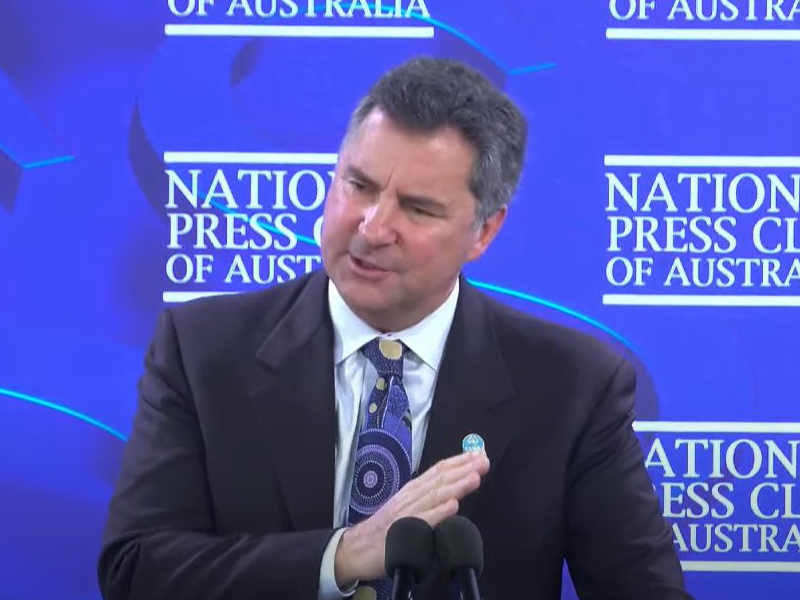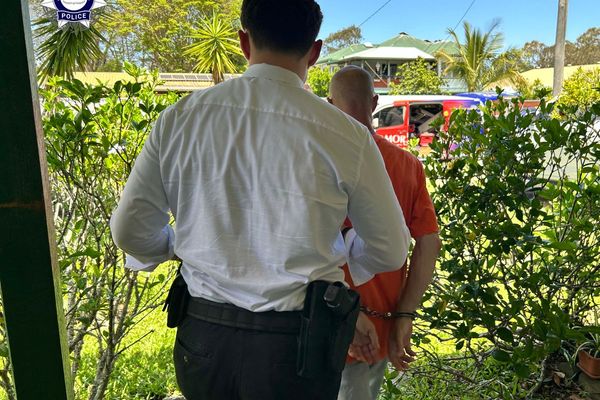CSIRO chief executive Larry Marshall has an anecdote he likes to tell about the national science agency’s research relationship with the Chinese Academy of Sciences as a foundational story of Australia’s science bond with the People’s Republic of China.
Australia, he says, has had research ties through CSIRO for nearly 50 years, established during the Whitlam era when a delegation from the Chinese Academy of Sciences visited facilities in Melbourne, Sydney and Canberra.
The Chinese Academy of Sciences is now orders of magnitude larger than the CSIRO, but Australia has maintained an outsized science relationship with China ever since.
Early in his first five-year appointment as CSIRO, Dr Marshall had an opportunity to ask a director of the Chinese Academy of Sciences “why do you waste your time with us? We are so tiny.”
Last Wednesday at the National Press Club in Canberra, Dr Marshall said the answer he got from the Chinese was “because when we were small, you spent time with us – and we have always treasured that.”

I have heard that story a few times now, delivered with conviction as an explainer on the importance of the China relationship, particularly as research and technological innovation has shifted from West to East in the past couple of decades.
But in 2022, as the geopolitical competition gets more intense, the questions are getting more pointed. This is especially the case in Canberra.
If Chinese science leaders spoke of treasuring the relationship early in his tenure at CSIRO, Dr Marshall is returning the favour. The investment in that science relationship in China continues to deliver value.
There was a specific benefit in the earliest days of Covid, and there is ongoing value and benefit in research focused global challenges like climate change, or industrial research in renewables.
The direct relationship that CSIRO had through its Australian Centre for Disease Preparedness with the Chinese Academy’s Wuhan Institute of Virology enabled Australian scientists to be working on COVID-19 response work from the start.
As a scientist entrepreneur with a background in venture capital, Dr Marshall is a glass-always-full optimist, and he is a master retail explainer of the role of science in industry, in the economy and in society.
And while the Press Club is a tricky gig, with an in-the-room audience that does not always match the at-home TV audience, in Canberra at least, the China story does not land as well as it did in 2015 during the good times.
Regardless, the message is simply enough. CSIRO has no qualms about working with its China-based science partners on common challenges.
“I think science just has this wonderful way of breaking down those barriers,” told the Press Club last Wednesday. “China needs us. We have amazing solutions for climate, [and] for the environment, and they are common problems.”
“So, I think if we can use that history [of CSIRO-China collaborations] and that basis, we can overcome geopolitical challenges going forward. Because we have to solve these common problems,” he said.
“On things that are a global challenge like solving a pandemic, or climate change, global issues, then absolutely we will work with China – as we have for five decades – and absolutely we will with the US.”
Dr Marshall’s speech to the Press Club coincided with the launch of the CSIRO’s global megatrends report Our Future World, a paper that goes into detail about the Geopolitical Shifts as one of the seven ‘megatrends’ facing Australia and the world.
This chapter on Geopolitical Shifts covers everything from cybersecurity challenges and the future supply chain risks associated with seaborne trade, to the rising investment in defence capability and an increased collaboration between democratic countries.
It also identifies the uncertainty around future flows of scientific knowledge.
“The global share of published papers with authors from more than one country has been on the rise, up from 18.6 per cent in 2011 to 23.5 per cent in 2019, but it is unclear how the pandemic will impact international collaborations in the long term.
“Despite the initial boost in multi-country papers in 2020, particularly for COVID-19-related papers, emerging geopolitical tensions and travel restrictions have subsequently hindered international collaborations.
“The number of Chinese publications with American co-authors has also been declining since 2017 and the number of American publications with Chinese co-authors declined for the first time in 2020.
“Siloed scientific endeavours in the future could lead to duplicated research efforts and wasted resources, both of which present potential risks.”
The bifurcation of scientific endeavour comes at a time when emerging technologies are tilting the strategic defence arena, as was also identified by the CSIRO’s report. It is, as Press Club director Steve Lewis pointed out in a question to Dr Marshall last Wednesday, a technology arms race.
Defence strategy and planning are being impacted by scientific and technological advances in (a) high-speed, variable-trajectory and precise-targeting missiles; (b) artificial intelligence (AI) and advanced autonomous systems; and (c) cyber/information warfare, the report says.
These technologies are already being used in current warfare and grey zone conflicts.
Regardless of long-standing relationships, scientific collaborations are becoming more complex, more difficult.







